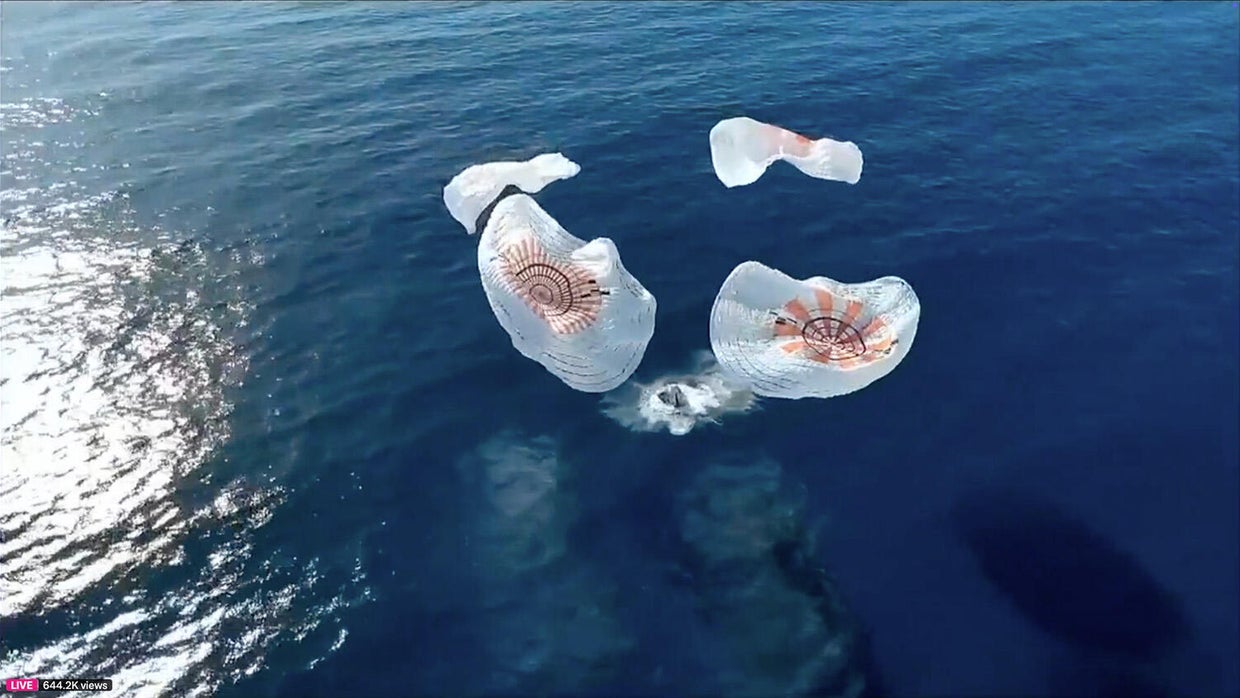Successful Splashdown of SpaceX’s Crew Dragon: A Journey to the Poles
A historic mission concluded on Friday as a SpaceX Crew Dragon capsule, named “Resilience,” returned to Earth, splashing down in the Pacific Ocean near southern California. This marked the conclusion of the spacecraft’s first crewed flight orbiting both the North and South Poles.
Mission Overview
The Crew Dragon launched on Monday from the Kennedy Space Center and successfully completed 55 orbits above the Earth’s poles during its three-and-a-half-day journey. At 11:26 a.m. EDT, the capsule’s braking rockets initiated its descent into the Earth’s atmosphere, culminating in a splashdown at 12:19 p.m. after enduring temperatures reaching up to 3,500 degrees Fahrenheit.
Splashdown and Recovery
After the capsule splashed down at a controlled speed of 16 miles per hour, SpaceX recovery crews were dispatched to retrieve it. They quickly secured the capsule and transported it aboard their recovery ship, the Shannon. Demonstrating the advancements in spacecraft operations, the crew exited the capsule autonomously, a capability not previously seen in crewed missions returning from long-duration flights to the International Space Station.
The Crew
This pioneering mission was led by mission commander Chun Wang and included three other global adventurers: Norwegian cinematographer Jannicke Mikkelsen, German robotics specialist Rabea Rogge, and Australian polar guide Eric Philips. The team, all seasoned explorers of extreme environments, met in Svalbard, Norway, known for its polar expeditions.
Exploration Goals and Scientific Experiments
Throughout the flight, the crew engaged in various scientific experiments, including filming auroras from orbit, testing compact exercise equipment, growing oyster mushrooms in microgravity, and capturing the first X-rays in space—crucial for future long-duration missions.
A Tribute to Exploration
The mission, aptly named Fram2, pays homage to an iconic 19th-century vessel named Fram, which facilitated vast Arctic explorations. A piece of the ship’s teak deck accompanied the Crew Dragon into space. Chun Wang expressed the spirit of the mission, stating, “Curiosity eventually took me across the continent and to the southern most tip of Earth… Fram2 isn’t just about going to space. It’s about pushing boundaries, sharing knowledge…”
The Future of Space Travel
With no crew member possessing formal pilot credentials, this mission sets a precedent. Unlike sub-orbital flights where non-pilots have participated, the Crew Dragon’s robust automation allowed a complete non-professional team to engage in orbital flight, furthering SpaceX’s goal to democratize space travel. Chun funded this journey to uncover new horizons and inspire further exploration among future adventurers.

Conclusion
The Fram2 mission has not only successfully highlighted the capabilities of SpaceX’s Crew Dragon but also showcased human ingenuity and the desire for exploration. As the crew plans to share their breathtaking views and experiences from this unique journey, the world looks forward to seeing how these pioneers continue to inspire future generations of explorers.

